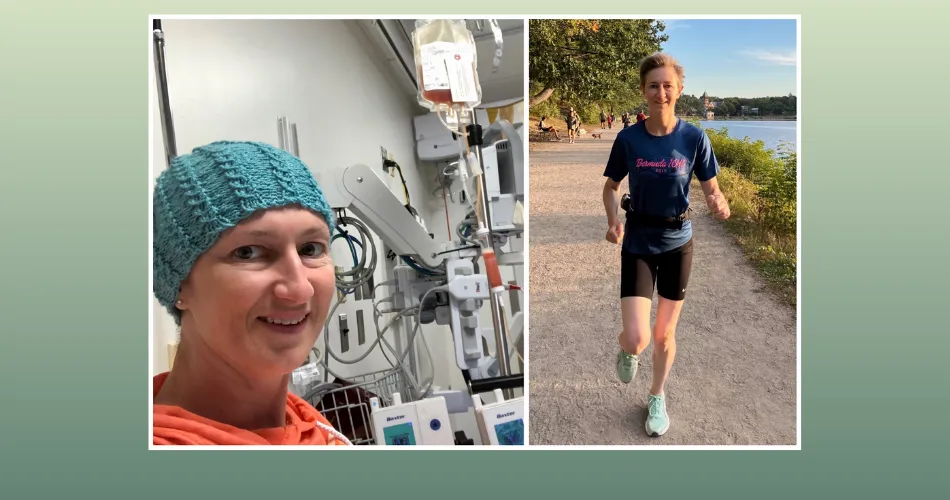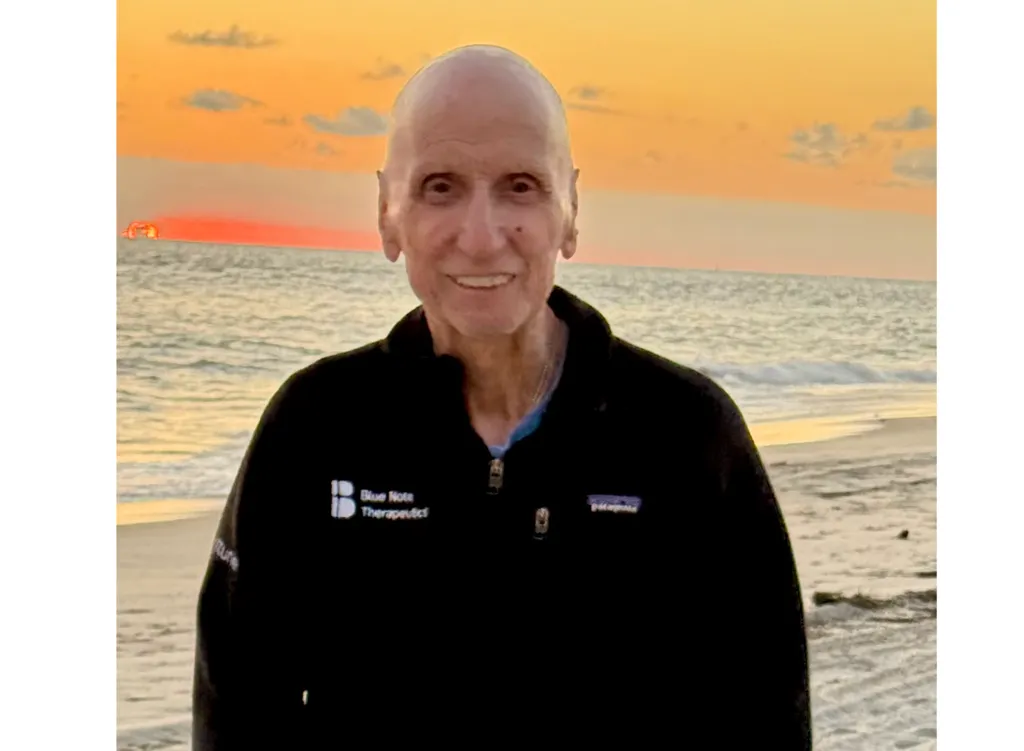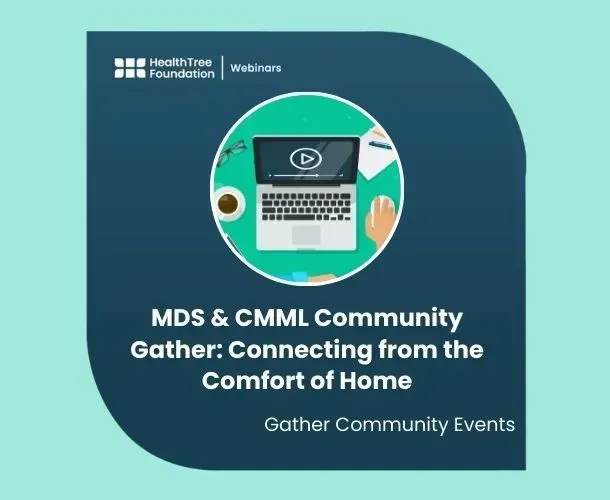Childhood AML
Can AML Occur in Children?
While AML is mainly known as an adult-onset disease, it can occur in children. About 4.5% of all AML cases in the United States occurred in people under 20 years of age. AML in children presents similarly to that in adults. Click here to learn more about AML. The tests done to obtain an AML diagnosis are similar as well. Once diagnosed, AML needs to be treated right away, which may require hospitalization.
What are the Risk Factors for Developing Childhood AML?
To this date, it's difficult to determine one specific cause of AML, but there are some factors that put children at higher risk. These factors include:
- Family or personal history of leukemia, MDS, aplastic anemia, Fanconi anemia
- Being exposed to cigarette smoke or alcohol before birth
- Past treatment with chemotherapy or radiation therapy
- Being exposed to ionizing radiation or chemicals such as benzene
- Genetic diseases such as neurofibromatosis type 1, Down syndrome, Noonan syndrome, Shwachman-Diamond syndrome, and Li-Fraumeni syndrome
How is Childhood AML Treated?
The treatment usually has two phases: induction and consolidation. Induction therapy is the first phase, and it aims to get rid of as many leukemia cells as possible, ideally putting the AML into remission. The second phase, consolidation therapy, aims to get rid of any remaining leukemia cells that may not be active but could begin to regrow and cause a relapse. Consolidation therapy may also consist of an allogeneic stem cell transplant.
Induction therapy in children is often the same as in adults, but the dose is adjusted according to weight and age. The most common treatments are: cytarabine and anthracycline (either daunorubicin or idarubicin). These medications need monitoring of the heart and kidney function.
If the AML is CD33 positive, a medication called gemtuzumab ozogamicin (Mylotarg), may also be given alongside the other two drugs.
To learn more comprehensive updates of research for childhood AML you can read the latest here.
One treatment that is different in children than in adults is that children often receive central nervous system (CNS) prophylaxis to prevent the spread of leukemia cells to the CNS. To do this, intrathecal chemotherapy is used, which administers chemotherapy directly into the spinal fluid.
There are two types of childhood AML that are treated differently:
- AML in children with Down Syndrome: there is a 10-20 times higher risk for AML in this group, but it’s been determined that they have better outcomes with a less intensive chemotherapy regimen. A lower-intensity regimen is often better tolerated in pediatric populations and shows good outcomes.
- Acute promyelocytic leukemia (APL): Like adults, APL is treated with different medications. A specific genetic change allows a treatment called All-trans retinoic acid (ATRA) to be very effective.
How is Survivorship Handled for Childhood AML?
Childhood cancer has physical and emotional impact on both the child and the family. While children who survive AML can go on to have enjoyable lives, some additional, ongoing care is still beneficial. It is important for the child to visit a pediatrician or doctor at least once per year for a physical examination and bloodwork. The child should also be visiting an oncology clinic on a schedule that is recommended by his or her oncologist. The child and family should be informed of signs and symptoms to look out for that warrant a prompt visit to either their doctor or oncologist.
Some symptoms that your doctor may ask you to look out for and schedule a visit if they occur include:
- Bleeding or swollen gums
- Wounds take a long time to heal
- Frequent infections
- Fever
- Pallor in cheeks, fingertips, and mucose
- Fatigue or irritability in small children
Are there Long-Term Effects of Childhood AML?
Some treatment effects can linger months or even years after treatment is completed. The severity of these symptoms varies widely, and some children might not have long-term side effects at all. Due to the effects of anthracyclines, it’s important to have the child’s heart and kidney function monitored periodically. Research is focused on maintaining long remissions while reducing long-term side effects.
Depending on the medication, dose, and characteristics of each patient, some possible long-term side effects may include:
- Thyroid dysfunction
- Infertility
- Hearing loss
- A secondary cancer
- Cognitive effects like difficulty learning, concentrating, and fine motor coordination
It is also important to promote a healthy lifestyle by encouraging children to eat a wide variety of foods, such as fruit, vegetables, whole grains, high-quality proteins, and healthy fats. Exercise, smoking avoidance, and regular doctor’s visits are also part of a healthy lifestyle.
Click here for a great resource discussing long-term follow-up recommendations.
Building a Community for Children with AML
It may be helpful to seek out support groups or professional counseling if children and their families are struggling emotionally with their AML journey. Because of the rare nature of this diagnosis, especially in children, being a part of a community is important to pressure researchers into expanding treatment advances.
Connecting with others who they can relate to can help children cope with their past experiences and allow them to improve their overall mental fitness.
If you want to keep learning more about childhood AML, watch the HealthTree University unit by clicking the button below.
Watch the Childhood AML HealthTree University Unit
Source:
Can AML Occur in Children?
While AML is mainly known as an adult-onset disease, it can occur in children. About 4.5% of all AML cases in the United States occurred in people under 20 years of age. AML in children presents similarly to that in adults. Click here to learn more about AML. The tests done to obtain an AML diagnosis are similar as well. Once diagnosed, AML needs to be treated right away, which may require hospitalization.
What are the Risk Factors for Developing Childhood AML?
To this date, it's difficult to determine one specific cause of AML, but there are some factors that put children at higher risk. These factors include:
- Family or personal history of leukemia, MDS, aplastic anemia, Fanconi anemia
- Being exposed to cigarette smoke or alcohol before birth
- Past treatment with chemotherapy or radiation therapy
- Being exposed to ionizing radiation or chemicals such as benzene
- Genetic diseases such as neurofibromatosis type 1, Down syndrome, Noonan syndrome, Shwachman-Diamond syndrome, and Li-Fraumeni syndrome
How is Childhood AML Treated?
The treatment usually has two phases: induction and consolidation. Induction therapy is the first phase, and it aims to get rid of as many leukemia cells as possible, ideally putting the AML into remission. The second phase, consolidation therapy, aims to get rid of any remaining leukemia cells that may not be active but could begin to regrow and cause a relapse. Consolidation therapy may also consist of an allogeneic stem cell transplant.
Induction therapy in children is often the same as in adults, but the dose is adjusted according to weight and age. The most common treatments are: cytarabine and anthracycline (either daunorubicin or idarubicin). These medications need monitoring of the heart and kidney function.
If the AML is CD33 positive, a medication called gemtuzumab ozogamicin (Mylotarg), may also be given alongside the other two drugs.
To learn more comprehensive updates of research for childhood AML you can read the latest here.
One treatment that is different in children than in adults is that children often receive central nervous system (CNS) prophylaxis to prevent the spread of leukemia cells to the CNS. To do this, intrathecal chemotherapy is used, which administers chemotherapy directly into the spinal fluid.
There are two types of childhood AML that are treated differently:
- AML in children with Down Syndrome: there is a 10-20 times higher risk for AML in this group, but it’s been determined that they have better outcomes with a less intensive chemotherapy regimen. A lower-intensity regimen is often better tolerated in pediatric populations and shows good outcomes.
- Acute promyelocytic leukemia (APL): Like adults, APL is treated with different medications. A specific genetic change allows a treatment called All-trans retinoic acid (ATRA) to be very effective.
How is Survivorship Handled for Childhood AML?
Childhood cancer has physical and emotional impact on both the child and the family. While children who survive AML can go on to have enjoyable lives, some additional, ongoing care is still beneficial. It is important for the child to visit a pediatrician or doctor at least once per year for a physical examination and bloodwork. The child should also be visiting an oncology clinic on a schedule that is recommended by his or her oncologist. The child and family should be informed of signs and symptoms to look out for that warrant a prompt visit to either their doctor or oncologist.
Some symptoms that your doctor may ask you to look out for and schedule a visit if they occur include:
- Bleeding or swollen gums
- Wounds take a long time to heal
- Frequent infections
- Fever
- Pallor in cheeks, fingertips, and mucose
- Fatigue or irritability in small children
Are there Long-Term Effects of Childhood AML?
Some treatment effects can linger months or even years after treatment is completed. The severity of these symptoms varies widely, and some children might not have long-term side effects at all. Due to the effects of anthracyclines, it’s important to have the child’s heart and kidney function monitored periodically. Research is focused on maintaining long remissions while reducing long-term side effects.
Depending on the medication, dose, and characteristics of each patient, some possible long-term side effects may include:
- Thyroid dysfunction
- Infertility
- Hearing loss
- A secondary cancer
- Cognitive effects like difficulty learning, concentrating, and fine motor coordination
It is also important to promote a healthy lifestyle by encouraging children to eat a wide variety of foods, such as fruit, vegetables, whole grains, high-quality proteins, and healthy fats. Exercise, smoking avoidance, and regular doctor’s visits are also part of a healthy lifestyle.
Click here for a great resource discussing long-term follow-up recommendations.
Building a Community for Children with AML
It may be helpful to seek out support groups or professional counseling if children and their families are struggling emotionally with their AML journey. Because of the rare nature of this diagnosis, especially in children, being a part of a community is important to pressure researchers into expanding treatment advances.
Connecting with others who they can relate to can help children cope with their past experiences and allow them to improve their overall mental fitness.
If you want to keep learning more about childhood AML, watch the HealthTree University unit by clicking the button below.
Watch the Childhood AML HealthTree University Unit
Source:
Get the Latest Acute Myeloid Leukemia Updates, Delivered to You.
By subscribing to the HealthTree newsletter, you'll receive the latest research, treatment updates, and expert insights to help you navigate your health.
Together we care.
Together we cure.
3x Faster.






